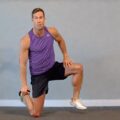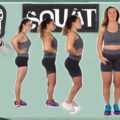The Power of the Squat
The squat is one of the most effective lower body exercises, working several major muscle groups at once. Properly executed, squats can build formidable strength and stamina with incredible efficiency. However, squats can also be risky if done incorrectly or pushed too hard. It’s important to focus on proper form, work within your limits, and build intensity slowly over time. Healthy exercise cultivates wellbeing; it should never violate dignity.
How to Squat With Good Form
- Feet shoulder width apart, toes slightly turned out
- Send hips back while keeping chest up
- Squat down keeping knees behind toes
- Focus on using leg muscles rather than back
- Go just below parallel, not necessarily to floor
- Keep weight in heels as you drive through legs back up
Focus on Technique First
When learning the squat, perfect proper form before adding any weight. Master the movement pattern first. Then begin with very light loads, progressively increasing intensity over time as strength builds. Lifting too much weight too soon leads to injury and long-term setbacks. Be compassionate with yourself and honor your body’s real readiness.
The Cardio Benefits of Squats
While known primarily as a strength exercise, squats can provide significant cardiovascular benefits as well. Performing high rep sets with little or no weight trains muscular endurance. Adding an explosive jump turns squats into plyometrics, which condition fast-twitch muscle fibers. Combining squats with lunges, jumps and lateral moves creates an intense full body cardio workout.
FAQ
What muscles do squats work?
Squats engage several major muscle groups at once, including quads, hamstrings, glutes, core and more.
How low should I squat?
Aim to squat down until your thighs are just below parallel to the floor while keeping your back flat.
Will squats make my thighs bigger?
Squats build strength and muscle mass throughout the legs. Some increase in size is likely, but it will be proportional.
Can I squat every day?
Squatting daily is not recommended. Rest days allow your muscles to recover and strengthen. Aim for 2-4 squat sessions per week.
What if squats hurt my knees?
Focus intensely on keeping good form. Consider reducing depth and load. Stop immediately if pain persists. Consider alternative exercises.









